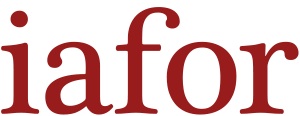Presentation Type: Oral Presentation

Waste Management Education and Its Impact on the Environment of the Kyrgyz Republic
In the Kyrgyz Republic, waste management has posed a great concern partly because of rapid urban population increase and poor waste management education. Past studies have shown that education for waste management can considerably contribute to reducing waste generation by inducing recycling. However, few studies have examined the link between environmental education at school and …

Human Relations of Small Isolated Island in Asia
There exist a traditional exchange activity called “Neyako” on a small island in Japan.The name of island is Toshi-island.This Toshi island has become known all over Japan these days. And many forms of media in Japan have recently paid attention to this Neyako. For example, NHK recorded Neyako for one year and broadcast it in …

Innovation Entrepreneurship and Value
Innovation can be define as new idea device or method how ever invasion is known as the application or better solution that meet new requirement un-articulated needs when there is a innovation the prove new ideas a barren mind there is an innovation is a human sole to a stage there is an innovation. such …

The Use of Interactive Technology for Effective Teaching and Learning in Open Distance Learning Programmes
Various learning technologies for learning are used by Higher Education Institutions (HEIs) to deliver distance education programmes. Using technologies for learning in the delivery of distance education (DE) programmes enables students to access teaching, learning and resources. The purpose of this study is to investigate the use of learning technologies in developed and developing countries …

Mainstreaming Disability Issues in Local Development
This paper gives an overview of existing spaces for participation of Persons with Disability (PWD) in direct governance in the Philippines using Archon Fung’s Democracy Cube Model. It underscores the importance of stakeholder participation in ensuring that policies and programs are responsive to and reflective of the needs of PWDs. The paper’s review of related …

Early Television in India: Programming and Citizenship
My paper will look at the programming of early television in India and how it remodelled models of democracy , citizenship and nationhood in India during the late 1960s and 1970s. I will focus on the two pronged approach state owned television took- positioning itself between commercial cinema and entertainment on the one hand and …

How I Deliver?- Exploring the Preferred Instructionalstyles of English Subject Teachers
This cross-sectional study was an endeavor to explore the teaching preferences of Secondary School English Subject Teachers and to find any difference in teaching styles of male-female, urban-rural Secondary School English teachers.The sample of the current study was consisting of tenth grade English subject teachers randomly selected from forty two Government Secondary Schools of the …

Pikipiki Hama Kae Vaevae Manava: An Oceanic Framework for Success
Pikipiki hama means to stick, bind or link strongly to the outrigger of a vaka moana (ocean going canoe). Vaevae means to give, share or to gift and manava is a core word in Pasifika contexts which refers to the heart, centre, womb or breath (Tui Atua Tamasese Taisi Efi, 2003). This saying is used …

Integration of Peace Concepts and Issues in the Social Science Curriculum of First Asia Institute of Technology and Humanities
This is a study about distinguishing peace concepts and issues for integration in the Social Science curriculum of First Asia Institute of Technology and Humanities (FAITH Colleges) in Tanauan City, Batangas, Philippines. The study was participated by 11 full-time and part-time faculty members who are teaching social science courses, 6 administrators under the College of …

The Skills Gap: Are We All to Blame?
Expectations around the kinds of skills that that students require to succeed in the 21st century workplace are shifting. It is now expected that students possess strong technological literacy and understanding, alongside being “creative thinkers”, “innovators”, “disruptors”. Such evolution of the working world has served to place more pressure on schools to ensure that students …
